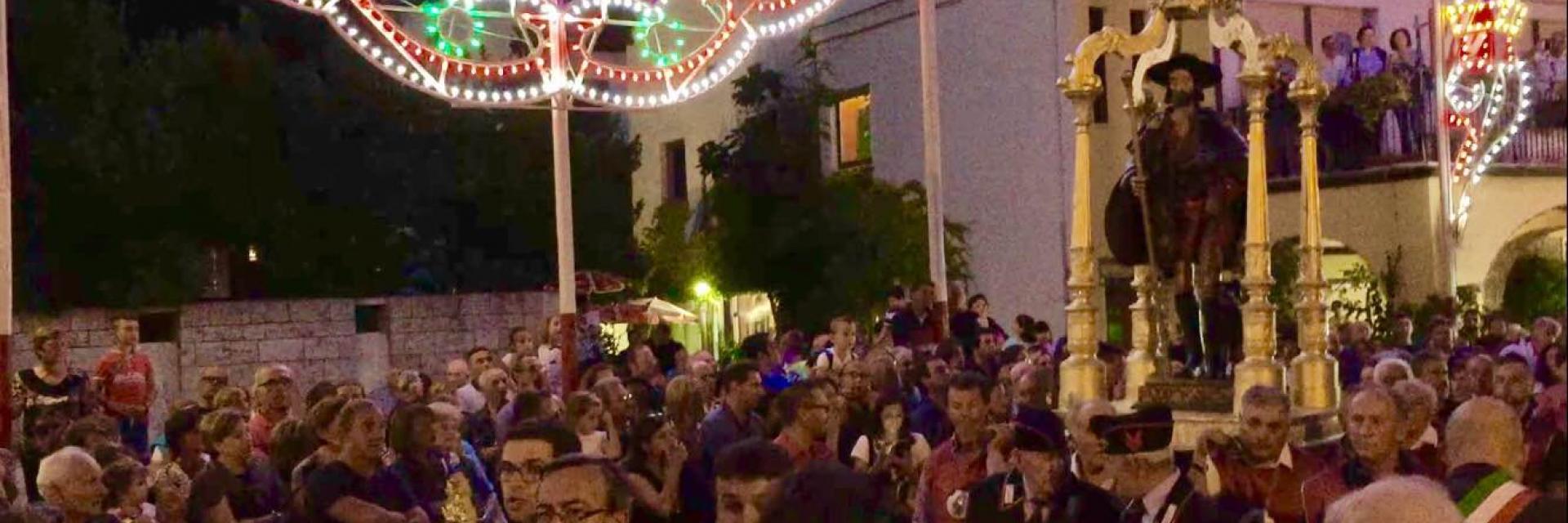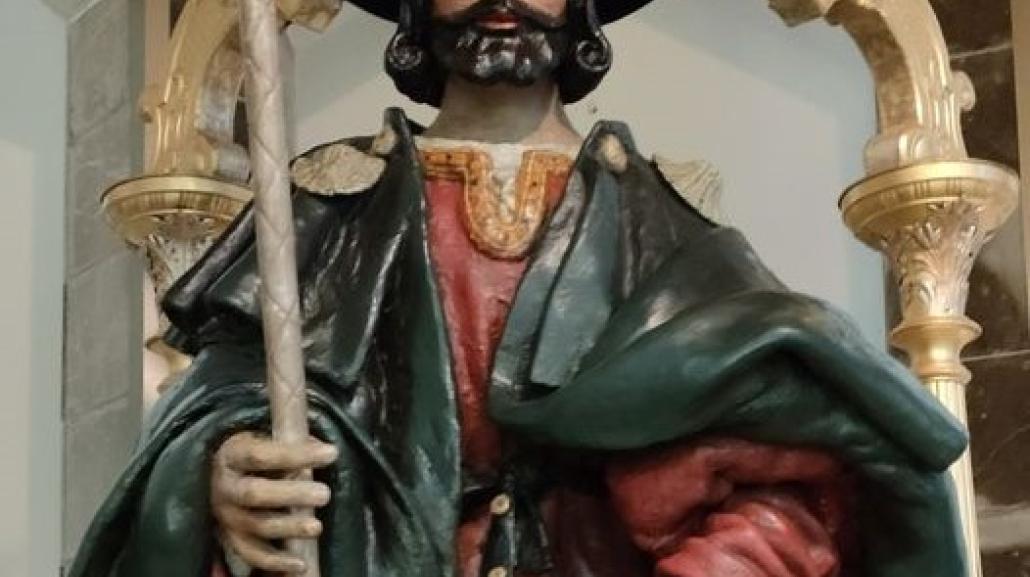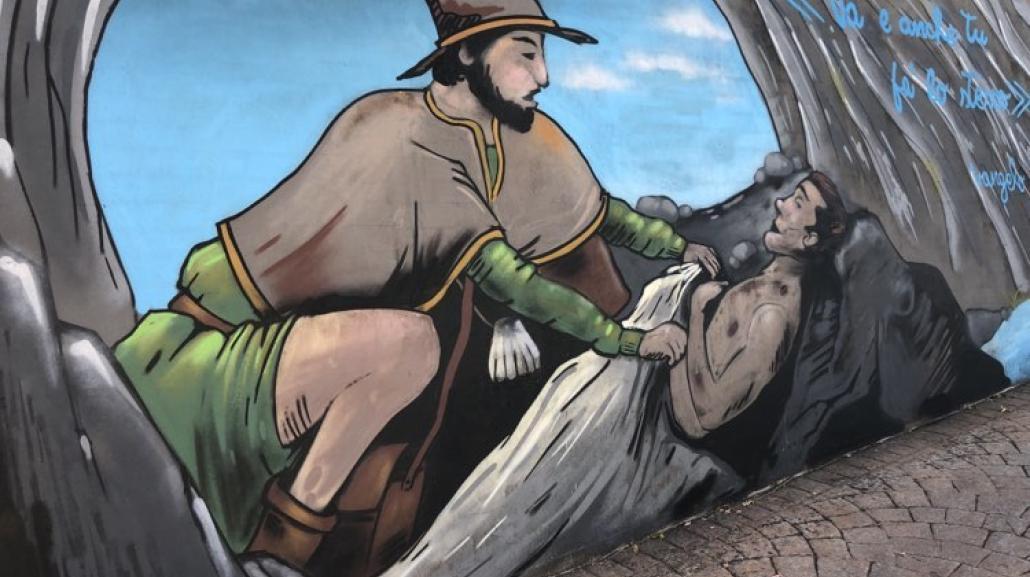San Rocco: Celebrations and Devotion in Roccamontepiano
In the calendar, August 16th is dedicated to San Rocco, but in Roccamontepiano, one of the most renowned towns for the popular celebration of the Saint, the festival begins several days earlier with a rich program of both religious and civil events. San Rocco is given special devotion, attracting a large number of people. The cult, widespread in all Abruzzese towns, is linked to San Rocco's miraculous abilities to prevent plague and skin diseases. It gained prominence in Roccamontepiano after 1765 when a landslide destroyed the entire town except for the church of San Rocco. It is a custom for the faithful to drink the water from the San Rocco fountain, considered miraculous, located just a step away from the church.
Once in Roccamontepiano, a town at the foot of the Maiella, you can stop to taste Vino Cotto, an exquisite product of the local agricultural tradition, accompanied by the most classic of Abruzzese street foods: porchetta.
Climbing the stairs adjacent to the church, you can visit the CeramiCapetola artisan shop, which produces the traditional San Rocco ceramic jug.
San Rocco is one of the most venerated saints in Abruzzo, and many theories and hypotheses exist about his identity. While we await more precise historical findings to attest to this in Abruzzo, here are some interventions on the subject.
San Rocco: The 14th Century 007
But did San Rocco really exist, and if so, who was he?
“Of course, he existed; he was a handsome young man born in Montpellier around 1340 to a noble family who, after studying at the renowned local school of medicine founded a century earlier by the Templars, descended to Italy around 1365 to carry out a very special mission. Dressed as a pilgrim, he traveled the entire Via Romea to finally reach the holy places and visit the tombs of the Apostles.
The fact is that in those years, few pilgrims were seen in Rome because the pope was in Avignon. Indeed, to be precise, Clement V (Bertrand de Got) established himself there in 1309 due to a complicated matter that I will tell you about another time (if not, look it up on Wikipedia - Avignon Papacy) and remained until 1377 when Gregory XI (Pierre Roger de Beaufort), yielding to the pleas of Catherine of Siena (and not only), returned to the Seat of Peter.
During a brief period between 1367 and 1370, the pope of the moment, Urban V (Guillaume de Grimoard), tried to reclaim the Roman seat, but the disturbances and violence shaking the city convinced him it was better to return to Avignon. In the previous years, diplomatic missions to arrange the pope's return had multiplied, but it is known that certain things, in addition to being handled officially, are better managed in the shadows, so secret agents dressed as pilgrims in the service of the French who wanted to keep the pope in Avignon and the Latin nobility (the Colonna, the Orsini, the Cenci, etc.) who wanted him in Rome, also multiplied. In short, between French popes and Roman antipopes excommunicating each other, between diplomatic missions and the plots of 007s with a license to kill (and be killed), when Roche (this was his Occitan name) arrived in Rome to carry out his international secret mission with a certain "English cardinal" (it seems to be Anglico de Grimoard), the environment was not the most recommended. Just as an example, a few years earlier, the story of Cola di Rienzo, the last tribune of Rome, had ended dramatically. After completing his mission, Roche set out on his way back when the fact that he knew how to cure the plague patients so well and healed himself perfectly aroused suspicion about his true identity. And since it was clear that he worked for the French, when he arrived in Voghera, he was arrested and imprisoned, where he died in 1379.
This is the human story of Roche as told by Pierre Bolle and André Vauchez, the greatest scholars of medieval hagiography of the moment, adding, however, that what matters is not who Roche of Montpellier was but to establish the origins and spread of the cult of San Rocco from liturgical documents, including those referring to the relics, if not for the fact that this story is also, despite some certainties, confusing and complicated. I will tell you another time. For now, if you go to Venice, visit the Scuola Grande of San Rocco because, in addition to his venerated relics, you will have the opportunity to admire one of the most beautiful palaces of the lagoon and the cycle of frescoes by Tintoretto that adorn it.
On August 16th, San Rocco is celebrated, a figure about whom current hagiography has raised many doubts but who for centuries has supported the hopes of a suffering humanity helpless in the face of the advance of uncontrollable epidemics. And since epidemics have always wreaked havoc (and always will) among the weakest sectors of the population, there is no church, especially in southern Italy, that does not have an effigy of San Rocco before which the people have implored grace. And that’s what counts."
Maria Concetta Nicolai, professor and expert in Anthropology and Cultural Heritage.
A Fascinating Legend
The small church of San Rocco remained standing in the 1765 landslide.
"The most accredited hypotheses about the presence of San Rocco in Roccamontepiano tell of the arrival of pilgrims and travelers hosted in the village at the foot of the mountain in the castle (the Rocca) of the noble Orsini family of Rome during the period when Rocco lived and stayed in Rome (1367-1370).
But in addition to the ancient paths and the many places of worship, including the monasteries of San Pietro and Santa Croce that housed travelers, the recent (2011) and fascinating legend of the discovery of the tomb of a young pilgrim also testifies to the presence of pilgrims in this territory. The remains were preserved in a tomb whose side walls were made of sandstone slabs placed vertically with a cover of the same material horizontally. This sort of urn safeguarded the remains of the pilgrim, who must have been a boy between 15 and 18 years old. The Superintendency itself supervised the excavations of several tombs in the locality of Sant'Angelo. These emerged accidentally during work on the agricultural land where they were located. The tomb, on which the plow fortunately stopped, allowed the recovery, in addition to the skeleton, of a scallop shell (typical pilgrim's shell) with two small holes at the top used to carry it tied with a cord at the waist. The tombs, in fact, were found in the locality of Sant'Angelo, where between the 9th and 14th centuries there was a castrum and a church in a cave (a sacred place built at the entrance of a cave with a spring inside) dedicated to Saint Michael the Archangel. Archaeologists have dated the tombs and the remains of the young pilgrim to the period between the 14th and 15th centuries.
It is also necessary to consider the hypothesis that, with the city of Ortona being the custodian of the bones of Saint Thomas the Apostle since 1258, there were pilgrim flows heading from Rome to the tomb of the "doubting saint" on the Adriatic coast after traveling the route of the Via Tiburtina.
San Rocco’s passage through here remains a fascinating legend, but what impacts unmistakably is the deep cult and fervent devotion, especially here in Roccamontepiano and its surroundings. Everything once again underscores the ancestral demand for divine intercession to invoke the end of any plague and pandemic. There is no town or village throughout Italy that does not have a tangible symbol—statue, painting, or church—bearing the name of this young layman who became poor and a pilgrim. In his short life, he devoted himself to others as a volunteer, dedicated to caring for plague victims. His life, though largely shrouded in mystery, has inspired admiration and deep devotion in the past centuries, a sentiment that persists especially in this village at the foot of the mother Maiella.
The historical and social context in which Rocco moves is well known, as we are in the second half of the 14th century when Saint Francis of Assisi had already inspired the Christian world to seek a more spiritual Church closer to the weakest. Born in France in Montpellier in the 14th century, he was orphaned of both parents at a very young age. In Roccamontepiano, tradition and popular legend place him in the village and as a hermit in the cave that bears his name. The transposition of the event from Sarmato has strengthened here after the destruction of the town that occurred on June 24, 1765, when the small extramural church, elevated by popular devotion, managed to escape that tragedy that did not spare the town nor about five hundred Roccolans out of the two thousand residents. The ruined church quickly became a highly visited and venerated sanctuary, and less than a hundred meters away is a cave from which very fresh water springs, considered the place where San Rocco took refuge.
Roccamontepiano has become the most important center of the cult of San Rocco, and here, on the days of Ferragosto, especially from August 14th to 16th each year, thousands of pilgrims and visitors flock. The current sanctuary was built in the 1950s, partly made with local stone, with a basilica plan and three naves. The statue of the saint dates back to the 17th century by an unknown author, but it is certain that in addition to the small church, there was also a banner of San Rocco.
Throughout the 19th century, numerous pilgrimages to Roccamontepiano took place, and at the beginning of the last century, the tradition and custom of acquiring the typical San Rocco jug at the end of the many religious functions in the church was born. The tradition of the "brocca o vecale de Sande Rocche" is widespread here: the typical enameled object is painted with the effigy of the saint and the year of production. The occasion of the cult takes on all the characteristics of a thanksgiving festival at the end of the great agricultural labors. In the past, it was also the meeting point for entire family groups and relatives who spent the day in the space in front of the church or in the surrounding meadows, organizing epic lunches on the grass where roast porchetta, sold at specially prepared stalls, abundant drinks of excellent local wine, and the consumption of a watermelon, perhaps cooled in the miraculous fountain next to the cave, were never lacking.
The festival has evolved with musical and pyrotechnic shows, an amusement park, and many other things, but it remains, despite modernity, one of the greatest devotional manifestations with the celebration of the typical fair. Even today, many faithful arrive at this place on foot from nearby villages to attend the numerous masses and bathe in the fountain's water, asking for the healing of diseases or praying to prevent them."
Adamo Carulli, former mayor of Roccamontepiano
Fuente: https://abruzzomarrucino.it/eventi/festa-di-san-rocco-19302
Fuente: https://abruzzomarrucino.it/consigli/san-rocco-il-pellegrino-con-la-conchiglia-20386



